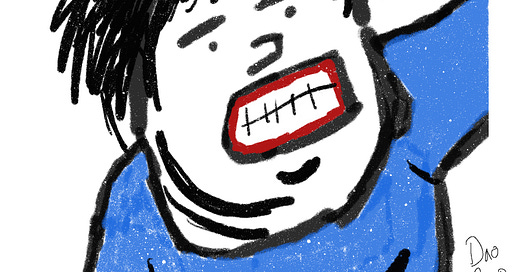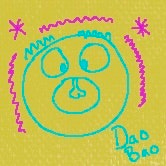The Invisible Art: "What Is Essential Is Invisible to the Eye"
When we look at some art on the Internet, the first thing we see is that it doesn't fit into our idea of what art is. There are many reasons for this. Most of them are invisible. Let's talk utility
This was the first DaoBao Auction Paddle I made, and it was the first one to be purchased on OpenSea. I don’t know who bought it. I know the wallet address of the person who bought it. I don’t know why they bought it. I only know why I made it. I’ll get to that in a minute.
This is an invisible piece of art, because at first you might look at it and think, “that is not art.” That is intentional. I want its aesthetic dialogue with the collector to work in this way.
This is the second DaoBao Auction Paddle that I created. It is also the second one that I sold. I know the wallet address of the collector. I also know the online identity of the person who bought it, but I have never met that person before.
This means that not only is my art really art. It has utility. Why? Because when more than one person buys a version of my art, it means that the idea of why the art is there is beginning to spread.
All art starts with curiosity.
It then moves to discovery and reflection.
It should then move to transformation.
Web3 art is mostly known as "NFT”. This means Non-Fungible Token. Non-Fungible means that the token cannot be replicated. It is solely owned by he / she who constructs it. The purpose of the token is to engage with the interaction of other web3 nodes on the blockchain in order to exchange information, reward participants, create provenance and historical text that trace an idea.
An NFT’s contract typically interacts with something called IFPS to call certain images that are hosted on a collective group of servers run on a peer-to-peer network. The contract then determines how to display those images, and how to mark its provenance.
That’s the simple way to put it.
The code of a smart contract gives specific instructions on how to encode an image and trace its origins through an activity known as minting.
Since the internet is filled with copies of images, it’s quite impossible to say that you are looking at a unique image. The ONLY thing in this context, that can make an image unique is the underlying code that proves its historical interaction with the contract.
So, the art is not the image.
The art is, in a way, the invisible code that many of us do not look at on the web.
This is DaoBao Auction Paddle number 5.
If it seems that I am being a little vague, that’s because I am on purpose being vague. I don’t have a real point to be made. At least, I don’t have anything focused or entirely conclusive to tell you. I only want you to question, as I am, “What am I actually looking at?”
Art starts with that question.
We then fill in the space created by the question with whatever we make happen next.
The entire collection can be found here. Please get in touch if you wish to discuss art on the web, #web3, and the future of the internet.






